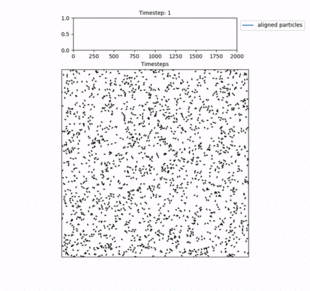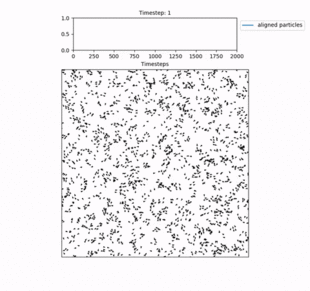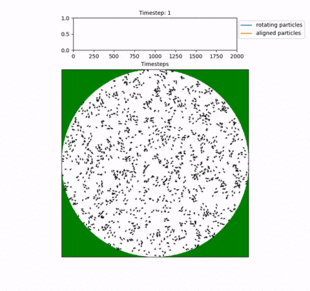Collective Motion of Trypanosoma brucei
Summary
This project is part of the DFG priority programme 2332 Physics of Parasitism.
Collective motion is a phenomenon occurring in many vastly different systems. It is characterized by the spontaneous emergence of ordered movement in a system of many similar self driven agents. Prominent examples are: flocks of birds or swarms of fish, but collective motion can also happen on much smaller scales. In 2017, scientists of the University of Würzburg discovered that Trypanosoma brucei shows collective motion in the tsetse fly host environment [1].
The goal of this project is, to reproduce movement patterns of trypanosomes using an agent based modeling approach. The established Vicsek model (VM) is used to model collective motion [2]. The basic model shows a collective phase for low noise and periodic boundary conditions. For more realistic geometries and interaction rules the behavior becomes far more complex. Understanding and quantifying the behavior is the key to expanding our understanding of typanosomes.



Basic Vicsek model simulations for high noise (left) and low noise (middle) in periodic boundary conditions, together with low noise in a circularly confined geometry (right). For low noise regimes swarms emerge and the particles move in an aligned way. For high noise the model behaves similar to an ideal gas. In a circular geometry a rotational movement is emerging.
[1] Schuster S, Kruger T, Subota I, et al. Developmental adaptations of trypanosome motility to the tsetse fly
host environments unravel a multifaceted in vivo microswimmer system. Elife. 2017;6:e27656, 2017.
[2] T. Vicsek, A. Czirok, E. Ben-Jacob, I. Cohen I, and O. Shochet. Novel type of phase transition in a system of
self-driven particles. Physical Review Letters, 75:1226, 1995.



